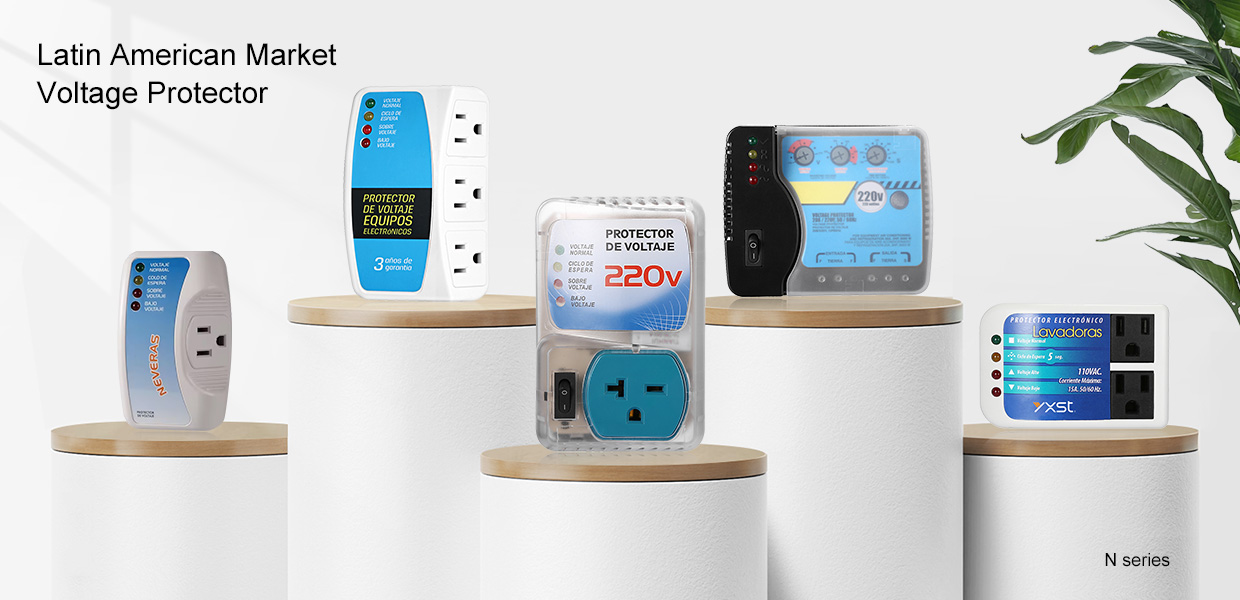In our daily life, the safe use of household appliances is a very important part. In order to ensure the safety of home circuits, it is particularly important to choose a high-quality automatic voltage surge protector. Automatic voltage protectors can effectively prevent circuit overloads and avoid electrical fires and other safety accidents.
In order to help everyone make a more informed choice, Yixing automatic voltage protector factory has sorted out some models with good reputation in the market. Let’s take a look at these recommended products.
Best Voltage Surge Protector Choice
Residential Voltage Protector For Microwave Oven
Suitable for air conditioners, televisions, refrigerators, audio systems, refrigerators, ice makers, washing machines, or any small electrical appliances (household appliances with a power less than 1440W).
Best Value
120V Voltage Protector 20A 2400W 140 Joules
√ Direct insertion design-easy to use.
√ 4 LED indicators: indicators indicating normal voltage, overvoltage, low voltage, and waiting cycle.
Voltage Surge Protector Recommend
20A 4400W Surge Protector 220 Volt
Features a fast response function that immediately disconnects power when abnormal voltage is detected to minimize potential damage to connected equipment.
Voltage Protector Recommend
Wholesale Custom Voltage Protector
- Over/under voltage protection
- Lightning protection
- Made of PC or ABS flame retardant material
AC Voltage Protector Recommend
110V AC 15A 1650W Surge Protector For Refrigerator
N006 Aire 110V AC 15A 1650W surge protector for refrigerator has 4 indicator lights, representing normal operation, delay waiting, high voltage, low voltage, one plug for connecting to the wall switch, and one plug for connecting to electrical appliances, such as refrigerators, TV, washing machines, etc.
Home Voltage Protector Recommend
120V AC Surge Protector for Appliances
N013 Surge protector for appliances is suitable for electric kettles, electric heaters, TVs, computers, and can adjust the voltage according to your needs.
When purchasing a voltage surge protector, the key points include:
√ Voltage level matching: The rated voltage of the surge protector should be higher than the actual working voltage to ensure that the device will not be damaged during normal operation.
√ Current capacity considerations: The maximum discharge current and nominal discharge current of the surge protector should be greater than the maximum surge current of the device to ensure normal operation during a surge event.
√ Fast response time: Choose a surge protector with a quick response time to protect the device in time.
Detailed explanation of each key point:
√ Voltage level matching:
The rated voltage of the surge protector should be higher than the actual working voltage to ensure that the device will not be damaged by overvoltage during normal operation. For example, if the working voltage of the device is 220V, the rated voltage of the selected surge protector should be higher than 220V, usually 240V or higher.
√ Current capacity considerations:
The maximum discharge current (Imax) and the nominal discharge current (In) are important parameters for evaluating the surge protector’s ability to withstand surge current. When selecting a surge protector, its maximum discharge current and nominal discharge current should be greater than the maximum surge current of the device to ensure normal operation during a surge event. For example, if the maximum surge current of the device is 40kA, then the maximum discharge current of the selected surge protector should be greater than 40kA.

√ Fast response time:
The response time refers to the speed at which the surge protector detects and responds to overvoltage. Selecting a surge protector with a fast response time can ensure that the device is protected when a surge event occurs. The faster the response time, the better the protection effect.
√ Other considerations when purchasing:
Installation location and protection object: Depending on the installation location and protection object, surge protectors are divided into primary, secondary, and tertiary levels. The primary surge protector is installed outside the building to protect against surge overvoltages caused by lightning; the secondary surge protector is installed inside the building to protect against surge overvoltages caused by residual surges from lightning and switching operations; the tertiary surge protector is installed near the power socket of the electronic equipment to protect against local surge overvoltages.
Technical parameter selection: Technical parameters such as current capacity, maximum discharge current, and residual voltage value must be selected according to the specific application scenario. For example, the current capacity of the power system surge protector should be greater than 10kA, the maximum discharge current should be greater than 50kA, and the residual voltage value should be less than 2.5kV.
Through the above tips and precautions, you can better choose the appropriate voltage surge protector to ensure the safe and stable operation of the equipment.









